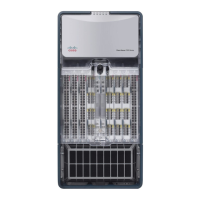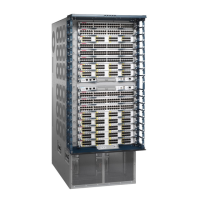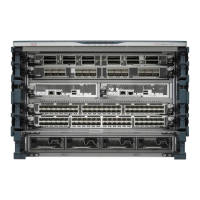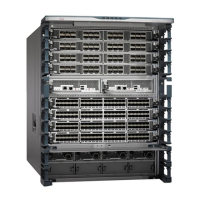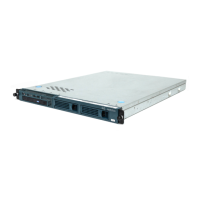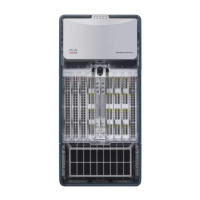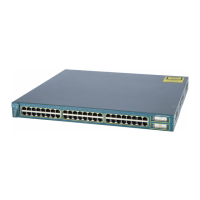3-140 Cisco 700 Hardware Installation and Mainteneance
Connecting Interface Cables
MultiChannel Connections
Two standard T1 serial cables are available from Cisco Systems and other vendors for use with the
MIP: null-modem and straight-through. These interface cables are used to connect your router to
external CSUs. The cables have male 15-pin DB connectors at each end to connect the MIP with the
external CSU.
Connect the T1 cable as shown in Figure 3-21.
Figure 3-21 MIP Connections
Connecting the Console Terminal
The system console port on the RP (or RSP7000) is a DCE DB-25 receptacle for connecting a data
terminal, which you will need to configure and communicate with your system. The port is located
on the RP (or RSP7000) below the auxiliary port and is labeled Console. (See Figure 3-22.)
Note Both the console and auxiliary ports are asynchronous serial ports; any devices connected to
these ports must be capable of asynchronous transmission. (Asynchronous is the most common type
of serial device; for example, most modems are asynchronous devices.)
Before connecting the console port, check your terminal’s documentation to determine the baud rate
of the terminal you will be using. The baud rate of the terminal must match the default baud rate
(9600 baud). Set up the terminal as follows:
• 9600 baud
• 8 data bits
• No parity
• 2 stop bits
Use the console cable provided to connect the terminal to the console port on the RP (or RSP7000),
then follow the steps in the section “Starting the Router” later in this chapter.
1
72-XXXX-01
MIP
H2637
CSU
72-XXXX-01
MIP
MIP
Straight-through cable
72-XXXX-01
MIP
72-XXXX-01
MIP
Null-modem cable
To second MIP

